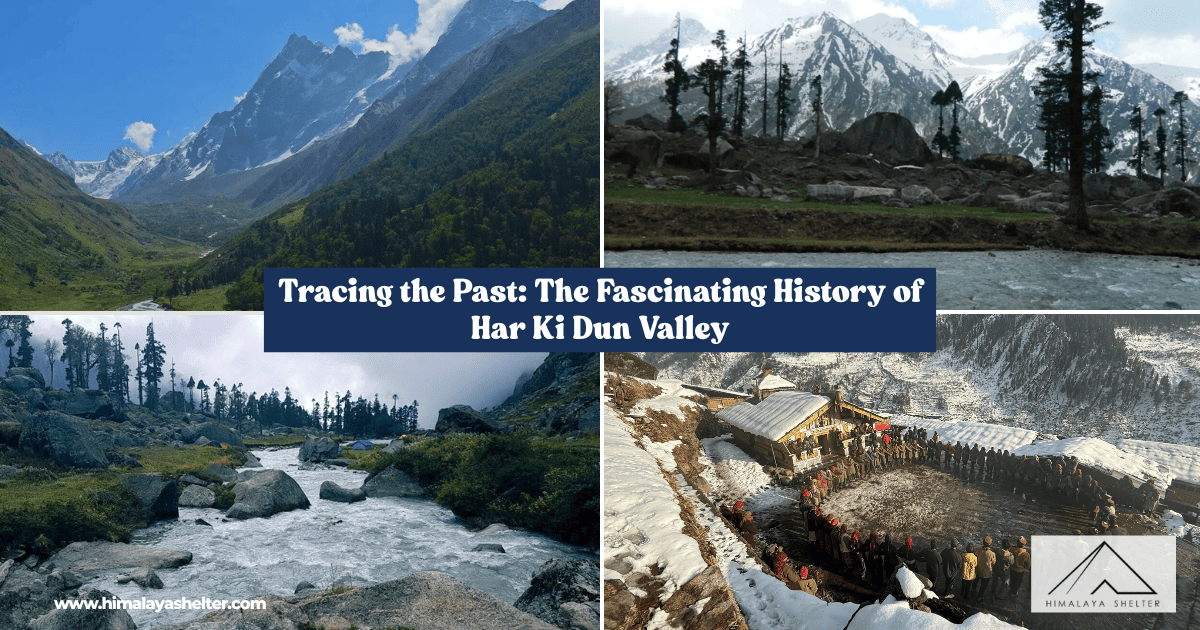
Har Ki Dun Trek
TREK DIFFICULTY
Moderate
TREK DURATION
7 Days
HIGHEST ALTITUDE
11,700 Feet (3,566 m)
GROUP SIZE
12
TREK DISTANCE
31 Km
BASECAMP
Har Ki Dun, Uttarakhand
BEST TIME
July to September
PICKUP POINT
Dehradun (Prince Chowk)
Har Ki Dun Trek Overview:
Discover the captivating beauty of the Har Ki Dun Trek through our comprehensive guide, revealing its unique cultural significance and awe-inspiring landscapes, making it an ideal choice for avid trekkers and nature enthusiasts alike. Har ki dun is a valley trek situated in the Govind Wildlife Sanctuary in the Uttarkashi district of north-west Uttarakhand. It is a cradle-shaped valley that can only be reached by trekking. The distance to the Har Ki Dun valley is 25 km from the road head, making the total trek distance 50 km. It takes 2 to 3 days to reach the valley and another 2 days to return. Har Ki Dun trek in terms of the trail is rather easy, as the ascent is very gradual and has only a couple of short sections which are slightly steep. The only challenge is the distance and we have to walk more than 10 km a day on 4 of the 5 trekking days. It can be done by families with children above 10 years of age.
In 1937, Doon School master Jack Gibson, along with Tenzing Norgay and his colleague John Martyn, climbed Bandarpunch Peak. Gibson made several expeditions in the region and trained young Indian mountaineers. The flora, fauna, and Garhwali culture of the Har Ki Doon Valley became known to the outside world through these expeditions. The name "Har Ki Dun" has two different interpretations. The first is the literal translation, i.e., "Valley of Gods" - "Har" is the name for "Shiva", one of the trinity gods as per Hinduism, and "Dun" means valley. The second name is more closely related to local culture and traditions. The second translation is "The sound of Shiva" or the "Sound of God". Every year during the monsoon, the valley hosts a festival to welcome Lord Someshwara, a form of Shiva, with drummers playing the drum. Ages ago, the Valley supposedly witnessed the disappearance of a Dhaki. During the festival month each year, people claim to occasionally hear the distant sound of drums played by the Dhaki in the early hours of the day. Many village elders mention hearing these drums multiple times throughout their lives.
Places to visit and Highlights of Har ki Dun Trek
Har Ki Dun Valley in itself is remarkably beautiful. But we get to further explore more places ahead of the Har Ki Dun Valley. Explorers can take three main routes in different directions from Har Ki Dun.
Marinda Tal:

Marinda Tal is a small but beautiful pond that forms on the stream that runs towards Har Ki Dun from the Borasu glacier. It lies in the north-west direction from Har Ki Dun. We have to trek 2.5 to 3 KM to reach the beautiful lake. A huge boulder obstructs the flow of the river making a shallow pond, surrounded by massive mountains, some of which remain covered in snow throughout the year. The altitude of Marinda Tal is 3,800 meters. An alpine meadow surrounds it, providing a good camping spot on our way to the Borasu Pass trek.
Hata Valley:
The Hata Valley features expansive alpine meadows that offer views of the Hata peak, visible from Har Ki Dun. Hata Peak altitude is 5,820 meters and it demarcates Uttarakhand from Himachal. Hata Valley is in the north direction, and to the right of Marinda Tal. It is around 3 KM in distance one way.
Jaundhar Glacier:
The Jaundhar Glacier is located at the base of the massive Swargarohini peak. The glaciers in this region have retreated dramatically by a few kilometres, a testament to the effects of global warming. To reach the glacier viewpoint, you have to trek at least 5 kilometres from the Har Ki Dun valley. The trek takes you towards the Swargarohini peak in the east direction. The glacier is a further 2 to 3 kilometres from the viewpoint.
Devsu Thatch:
Devsu Thatch located at an altitude of 10,032 feet, is a sprawling meadow above the Supin River. Devsu Bugyal is surrounded by dense forests. Graced with beautifully landscaped grassy mounds and an array of flowers, including orchids, poppies, anemones, primulas, daisies, and marigolds, it offers a mesmerizing experience. Barefoot strolls on soft grass become a sensory dance with nature, inspiring a day of camping to savour the beauty.
Villages of Har ki Dun Valley- Osla and Gangaad:
The trek of Har ki Dun Valley is not only famous for its mesmerizing landscapes, views of the Himalayan Range, and the beauty of Mother Nature that reflects through each and every tiny wildflower that blooms into it but also because of the remote villages that lie in the lap of the Har ki Dun Valley. Osla and Gangad are two famous villages that you will be able to see/visit during your Har ki Dun Trekking. Osla is the most famous village of all due to its rich heritage and unique culture. The villagers of Osla are really kind-hearted and welcoming. In case you are willing to go for the Himalayan Village Exploration program, you will find many cozy homestays in Osla and Gangad where you can stay comfortably and interact with the villagers and observe their lifestyles. If you get a chance, you can enjoy the traditional cuisine at Sankri/Osla. A wholesome Garhwali Thali containing Kafli, Manduva roti (Millet Roti) and Red rice with local dal cooked in a wood fired oven will surely be a luxurious delicacy for you. There is a 5000-year-old ancient temple. Some people believe that this temple was dedicated to Prince Duryodhana and in earlier days, the villagers of Osla used to worship him. But nowadays, they deny this and don't like their village to be associated with a devil personality. Hence, the temple is said to be dedicated to Someshwar Devta. The fine and intricate wooden carvings of the Someshwar Temple will amaze you. A similar work of art can be observed in the wooden carvings of old wooden houses in Osla village.
Flora and Fauna of the Har ki Dun Valley Trek:
- Flora: Deodar cedar, Chir pine, Oak, and Conifers such as Spruce, Blue pine, and Silver fir.
- Fauna: Himalayan Snow leopard, Himalayan black bear, Brown bear, Monal pheasant, Bearded vulture, Golden eagle, Western tragopan, Steppe eagle, and Black eagle. Har ki Dun trekking can also be considered a great destination for bird watching in Uttarakhand. During the Har ki Dun Trek, you will be able to spot many rare species of birds that are found only in the Himalayas. It will be interesting to know that the Snow Leopard project was started from the Govind Pashu Vihar National Park the territory of which covers the Har ki Dun Valley. Please don't worry, you will not encounter this rare wild cat 'Snow leopard' during the trek.
- Rhododendron arboreum: Rhododendron arboreum, also known as Burans or the forest tree. It blossoms in red, pink or white and provides a striking note of aberration to the green background. It is conspicuous in the various altitudes modified to suit the Himalayan region.
Day 1: Drive from Dehradun to Sankri
- Drive Duration: 8 to 9 hours | Drive Distance: 190 km | Altitude Gain: 2,100 ft – 6,725 ft | Accommodation: Guest House
Day 2: Drive from Sankri to Gangad and Trek to Osla
- Drive Duration: 1 to 1.5 hours | Trek Distance: 4 - 5 km | Altitude Gain: 6,725 ft – 8,270 ft | Accommodation: Homestay
Day 3: Trek from Osla to Kalkatidhar
- Trek Distance: 5 - 6 km | Altitude: 8,270 ft – 10,830 ft | Accommodation: Alpine tent
Day 4: Trek form Kalkatidhar to Har ki Dun & Marinda Tal, return to Boslo
- Trek Distance: 10.5 km | | Altitude Gain and Loss: 9,977 ft to 11,600 ft to 10,412 ft
Day 5: Trek from Boslo to Devsu Thatch
- Trek Distance: 5.1 km | Trek Duration: 5 hours | Altitude Loss: 10,502 ft to 9,878 ft
Day 6: Trek from Devsu Thatch to Gangad, Drive to Sankri
- Trek Distance: 7 - 8 km | Trek Duration: 5 - 6 hours | Altitude Loss and Gain: 9,878 ft to 7,709 ft to 8,265 ft
Day 7: Drive from Sankri to Dehradun
In Himalaya Shelter, we provide you with the option to customize your trekking experience. Whether you're a solo traveler, a group of friends, or a family, you can opt for our personalized tailor-made trekking program. This customized trek will be exclusively designed for you, taking into account your specific requirements for transportation, accommodation, meals, and any other premium facilities you may need during the trek. No other participants will be added to your group. Choosing a customized trek will enable you to fully enjoy the trek with your loved ones. Click here to learn what a Customized Trekking program looks like.
The Har Ki Dun Trek Map showcases the enchanting trail through the Garhwal Himalayas, leading to the picturesque Har Ki Dun Valley. Meandering alongside the Tons River, the map highlights the breathtaking views of snow-capped peaks and lush meadows, offering a captivating adventure for trekkers and nature enthusiasts alike.
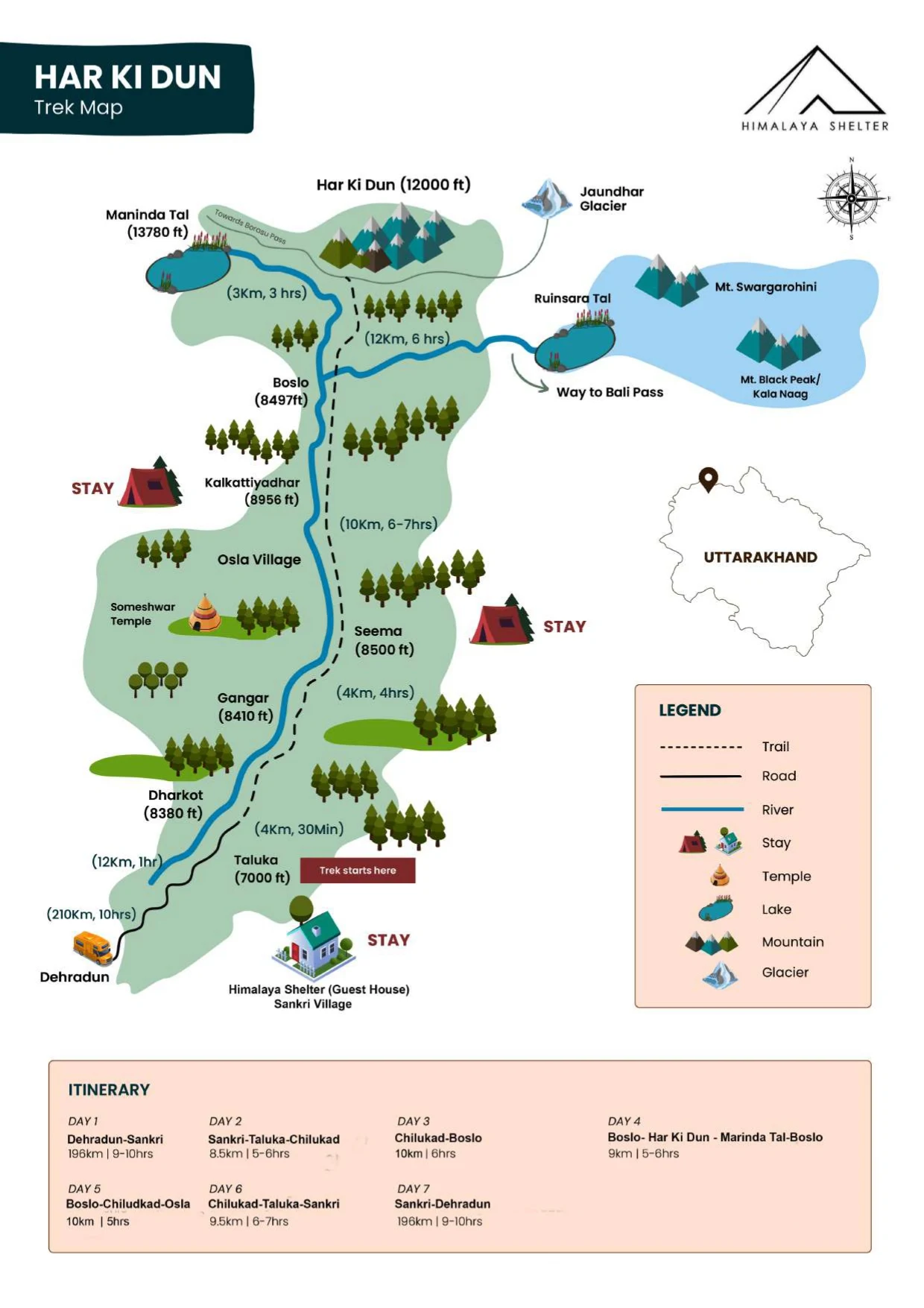
Har Ki Dun Trek Map
Har Ki Dun is considered a moderate level trek in terms of difficulty. The trail follows a well-laid path all the way to the Har Ki Dun valley, a route that the native people of the valley have used for many years. The total distance to the last village of the Har Ki Dun valley, Osla, is 14 km from the starting point of the trek. Some sections have minor steepness, and the final stretch of about 0.5 km is notably steep. During the first day of the trek, we covered only around 10 km, leaving the steep section for the second day. Overall, the trail is gradual all the way to the valley. The distance from the last village to the Har Ki Dun valley is another 11 km. Thus, the total distance of 25 km is covered in 3 days. On the third day, we go further to Marinda Tal, which is 2.5 km ahead of Har Ki Dun. The approximate walking distances for each day are as follows: An additional two days of driving to Sankri and back to Dehradun complete the entire journey, making it a 7-day trip. If you can walk long distances, you can easily trek to Har Ki Dun without worrying much. Children aged 9 or above have been able to complete this trek with us without any difficulty.
The Best time to visit Har ki dun trek in Spring (April–June) because of clear views and blooming flowers. Autumn (September–November) has crisp skies and golden leaves. Avoid the monsoon season (July to August) because of the excessive rain and the risk of landslides. Winter (December to March) can be good for experienced snow trekkers, but it's more colder and harder.
You can undertake the Har Ki Dun trek throughout at least 7 months of the year. The trek remains accessible in various weather conditions and all seasons, except during the monsoon month, when rain can pose significant challenges.
Har Ki Dun Trek in Spring (March - April)

In late March, generally in the last week of the month, the Har ki Dun trek reopens. The trail may be slightly difficult to navigate as verglas (ice layers) are very common on the trail right after it reopens and up to at least the first week of April. This makes the trail very slippery, and thus, it is important to use micro-spikes during your trek. The grasslands gradually start changing hues from brown to green, and by mid-April, the flora is in significant bloom. During these months, the nearby peaks such as Hata Peak, Swargarohini, and other higher reaches remain covered in a lot of snow, offering a very contrasting and beautiful landscape. Expect the weather to be very cold at night. Snow can still be found at Har Ki Dun and Marinda Tal. By late April, the days are very pleasant while the evenings are still quite cold.
Har Ki Dun Trek in Summer (May - June)

Summers are undoubtedly the best time to trek to Har Ki Dun. The weather is really pleasant with warm days during the day and relatively pleasant evenings. Summer showers melt snow in lower reaches, allowing floral bloom, while the peaks remain covered in snow. This makes the landscape breathtakingAfternoon showers become common during the Har Ki Dun trek in summer, but the weather is generally clear and will remain so until the last week of June. By the end of June, the monsoon arrives in the valley, and the wildlife sanctuary closes. For adventure seekers, August can still be a unique time to consider the trek, accounting for the associated risks. The locals celebrate the vibrant Har Ki Dun festival to welcome Lord Someshwara at the beginning of August. It can be a unique time to explore the trek or at least the villages of Har Ki Dun valley. The trek in general resumes in the month of September.
Har Ki Dun Trek in Autumn (September - October)

The month of September has the maximum floral bloom among the months that the trek is open, owing to the preceding monsoon rains. However, the snow even from the higher reaches melts away. September can be a good time to plan for the Har Ki Dun trek as often the rains are minimal. By October, the autumn colors take sway. The Har Ki Dun Valley looks like a world covered in a cobbler crust of brown sugar and cinnamon. The evenings can be very chilly in October. While the snow would have to wait until mid-November, October rains can bring some snow to the valley, especially by the end of October. November marks the arrival of winter and snow will begin to envelop the valley.
Har Ki Dun Trek in Winter (November - December)
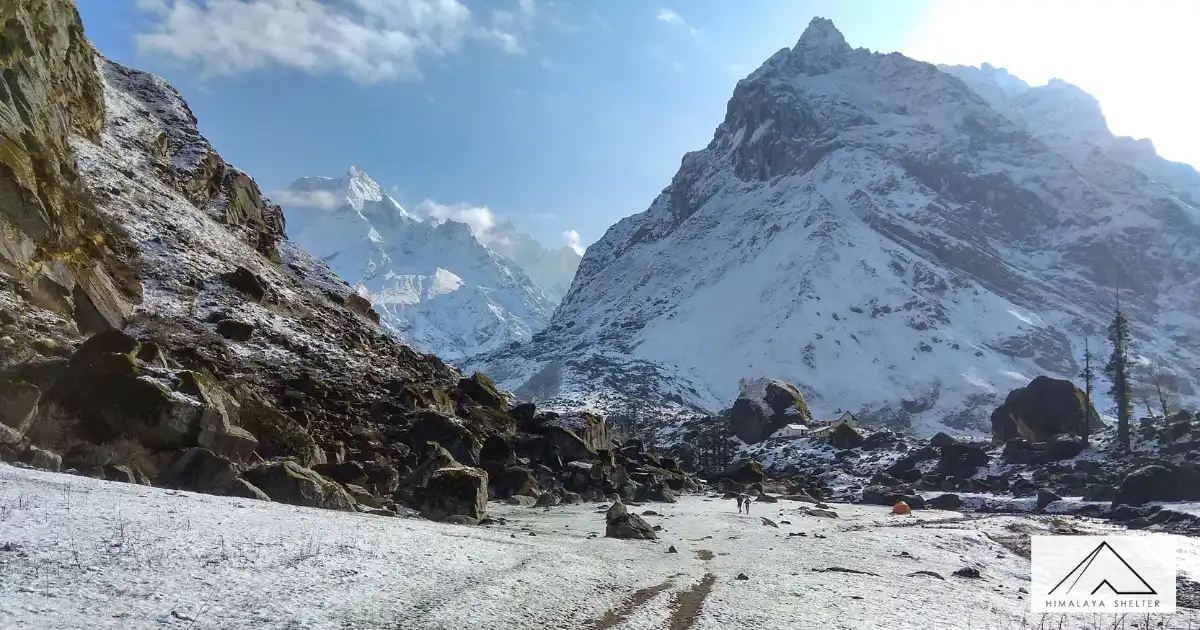
Snow generally arrives in the Har Ki Dun valley and around the Osla village by mid to late December. In recent years, the November month has seen significant, albeit very few, spells of snow in the Har Ki Dun valley. This covers the valley in a white snowscape. However, excessive snow can close the trek. For the lucky few who are able to complete this trek in December month, around the first couple of snowfalls, the valley turns into a fairy world right out of some Disney fairytale. Expect the weather to be really cold, and temperatures to be sub-zero at the Kalkatidhar or Boslo campsites. Verglas can be present on some stretches, and thus micro-spikes are really a must. Overall, the spring-summer months from mid-April to mid-June and the September month are the safer months for visiting Har Ki Dun. Those planning to visit during other months should conduct a thorough weather check before making plans.
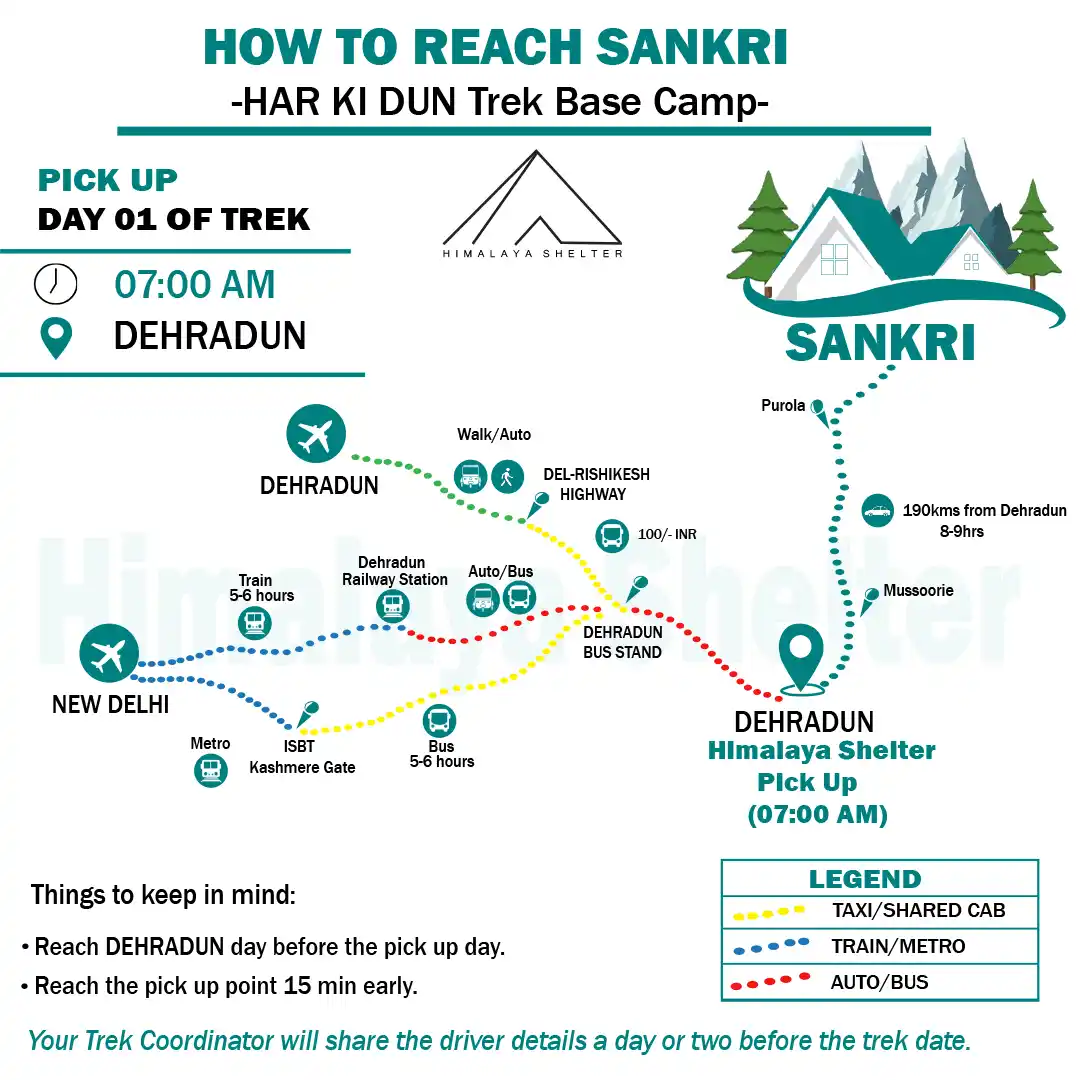
How to reach Har Ki Dun
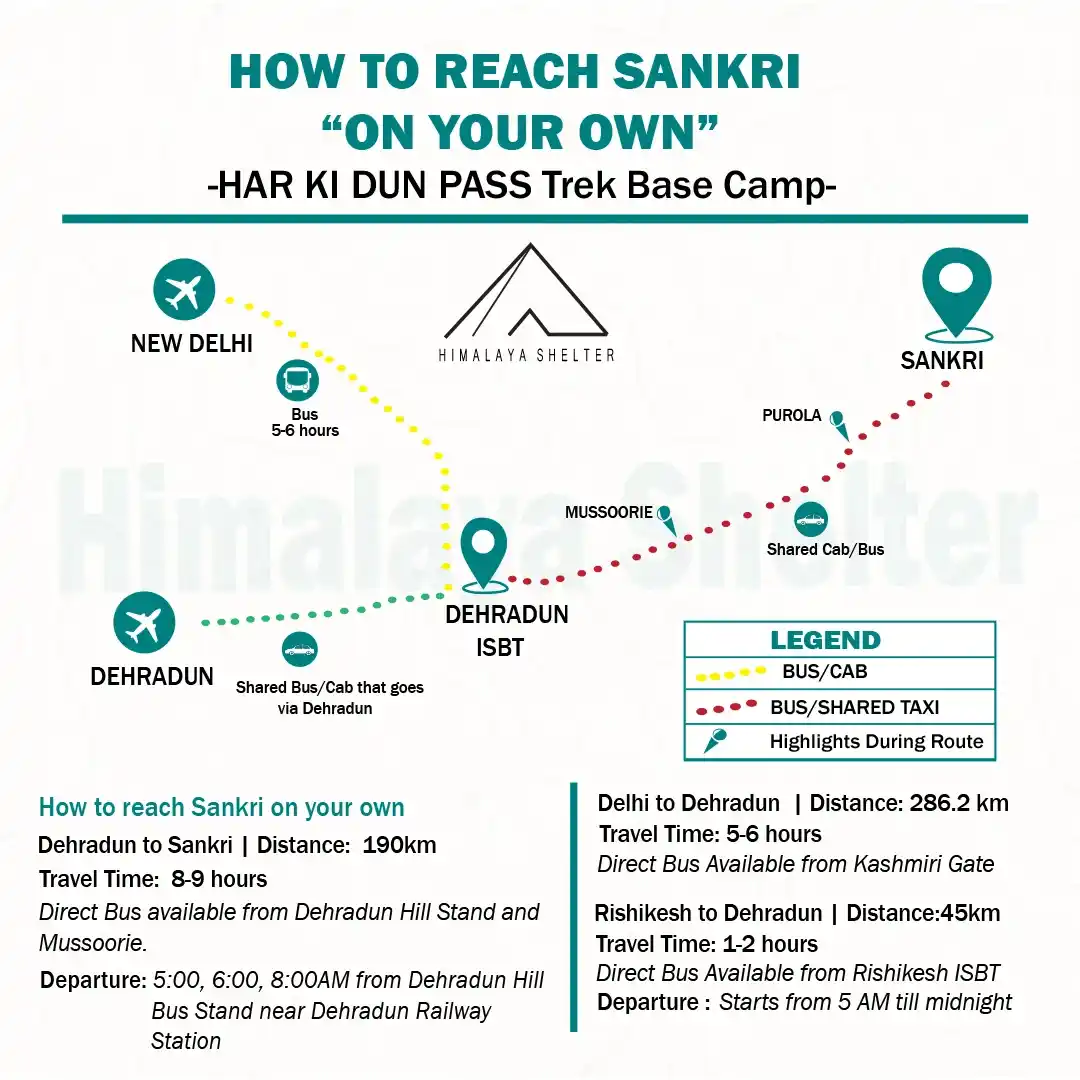
How to reach Har ki Dun "On Your Own"
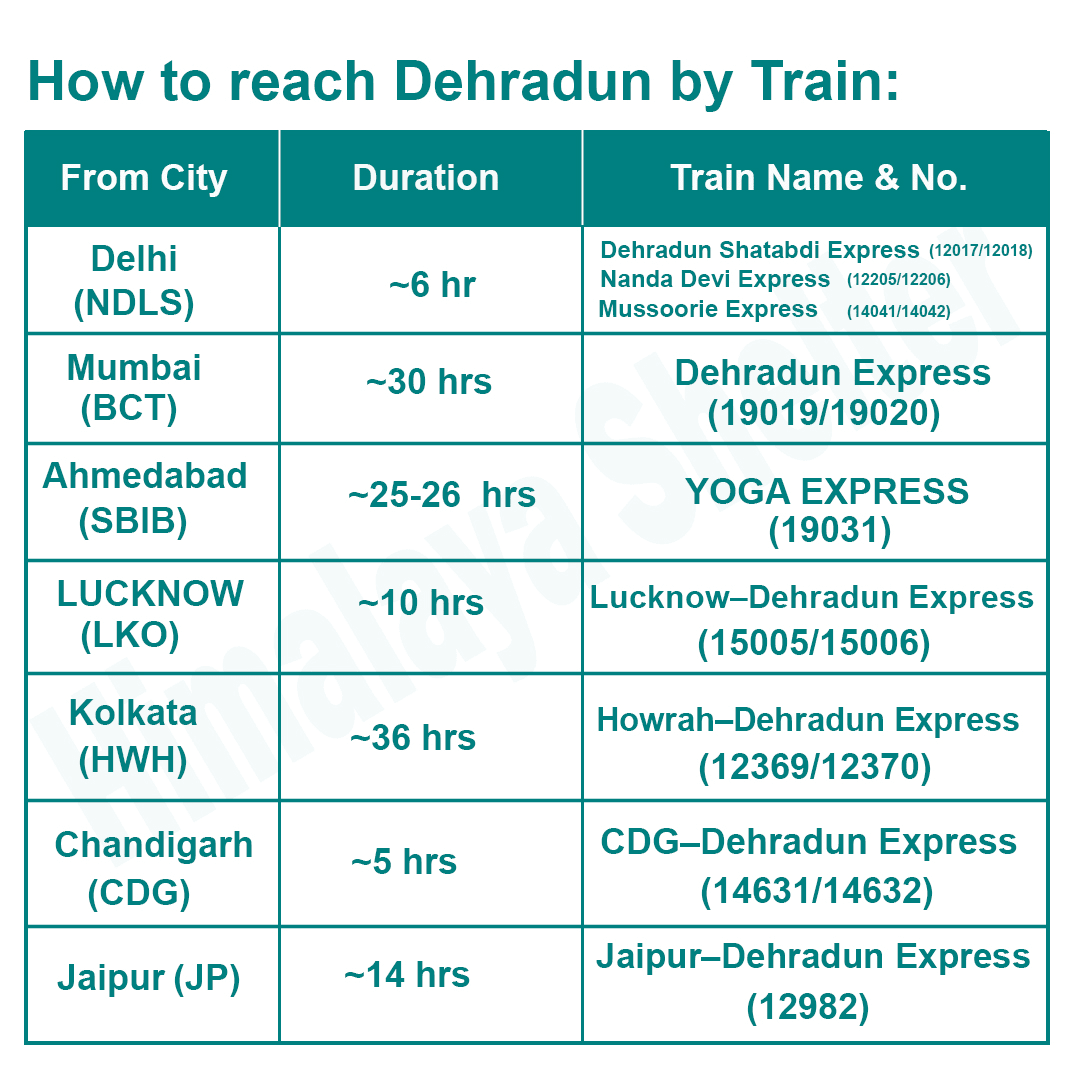
How to reach Dehradun by Train
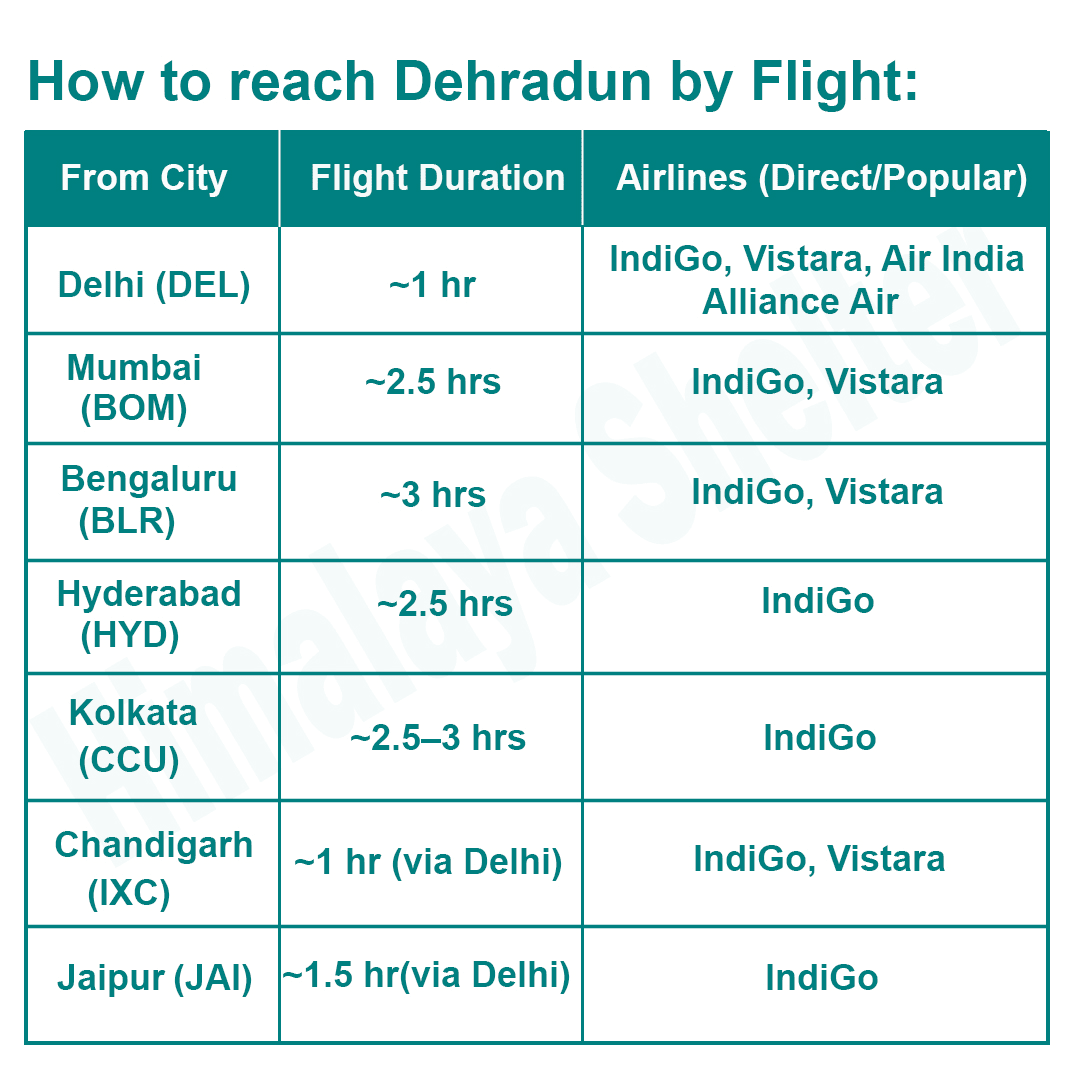
How to reach Dehradun by Flight
Har Ki Dun Trek Route offers an enchanting journey through the pristine valleys and ancient villages of the Garhwal Himalayas. This picturesque trail captivates trekkers with its breathtaking vistas of snow-capped peaks and lush green meadows.
- Sankri village serves as the base camp for a trek to Har Ki Dun valley. It is a village that also serves as a basecamp for other popular treks such as Bali pass trek, Rupin Pass Trek, Borasu Pass Trek, Kedarkantha trek, etc. Sankri is located 190 km from Dehradun, and the drive goes via Mussoorie, Kempty Falls, and Naugaon, where the route to Yamunotri and Sankri diverges. Purola and Mori are two important towns ahead of Naugaon. From Mori, expect little to no network coverage and a bumpy road as we enter Govind Wildlife Sanctuary.
- The Har Ki Doon trek starts with a drive from Sankri to Taluka, from where we trek to the Har Ki Dun valley. It is situated approximately 25 km farther ahead of Taluka. The entire trek is 50 km, and an additional 2.5 km to Marinda Lake.
- The trek is along the Supin River and goes through the Garhwali villages of Taluka, Gangad, and Osla. The trekking route is densely forested up to Osla, the last village. Har Ki Dun has one Forest Guest House and one Garhwal Mandal guest house (GMVN).
- Camping in the Har Ki Dun valley has been prohibited since the Uttarakhand High Court banned camping in meadows in 2018.
- From Har ki Dun Valley, one can see the entire North Face of Swargarohini I (6,252 m) peak. This face descends to about 2,000 m in less than a 2 km distance and has not been climbed yet.
- Some associate it with the path to heaven that the Pandavas of the epic Mahabharata supposedly took. However, the story is actually linked to the Swargarohini steps visible from Satopanth Lake, located beyond Badrinath.
- The beautiful Marinda Tal, formed by a huge boulder obstructing the river, can be trekked in an hour from Har Ki Dun, at a distance of 2.5 km. We can explore the Hata Valley to the north of Har ki Dun.
- The hike to the Jaundhar Glacier viewpoint that takes us to the Swargarohini Base is not feasible owing to the long distance.
- There are many passes in this region, and a few of them cross over into Kinnaur, Himachal, such as Rupin Pass & Borasu Pass. Those towards Yamunotri & Gangotri, such as Bali Pass, Fachu Kandi & Dhumdhar Kandi, go to the Gangotri valley.

Backpacking List for Har ki Dun Trek
Before going on the Har ki dun trek you need to have the best knowledge on how to prepare for a Himalayan Trek with a perfect backpacking of gear and equipment required, so that you can enjoy the trek without worrying about the common requirements otherwise lack of proper backpacking preparation can lead to the worst experience of your beautiful trek. Follow the instructions below to pack your backpack for hiking-
Mandatory Documents:
Ensure you carry essential documents such as a valid ID proof (driver’s license, Aadhar Card, or passport), medical fittness certificate and an adventure insurance.
Accessories:
Bring along a sturdy Backpack with rain cover, Waterproof Shoes, trekking poles, sun cap, sunglasses, headlamp or flashlight, lunch box, water bottle, a trek route map & current weather forecast of the the trail' region. Don't forget to carry a camera to capture the scenic beauty of Har ki dun Trek, and a power bank for charging electronic devices.
Toiletries:
It's essential to bring basic toiletries to ensure personal hygiene and comfort during the trek. Pack biodegradable soap a toothbrush and toothpaste, deodorant, tissues or wet wipes, hand sanitizer, lip balm, sunscreen, a small towel, and a comb.
Clothings:
Wear multiple layers of clothing to suit different temperatures. The best Packing of essential clothing for a Himalayan Trek is key point to fully enjoy your trek without much affacted by the harsh weather. Always Try to pack as many items as possible that are moisture-wicking, warm, waterproof and comfortable.
- For trekking in spring, summer, and monsoon: 1 Trek Pant, 1 innerwear (made of nylon), 1 lightweight shirt, 1 fleece Sweater, and 1 poncho
- For Trekking in Autumn, and starting of Winters: 1 Trek Pant, 1 pair of thermals, 1 t-shirt, 1 fleece Sweater, 1 padded jacket, and 1 poncho
- For Trekking in Winters: 1 pair waterproof gloves, 1 Trek Pant, 1 pair of thermals, 1 t-shirt, 1 fleece Jacket, 1 padded jacket, and 1 windproof jacket
Extra cloths as per the duration of Har ki dun Trek
- 3 T-shirts (Wear one, carry two)
- 2 pair thermals (Wear one, carry one)
- 2 quick-dry trek pants (Wear one, carry one)
- 3 pair socks (Wear one, carry two)
- 2 pair gloves (Wear one, carry one)
- 1 padded Jacket (Always carry it in your bag, whether you are wearing it or keep it with you in case there is a sudden drop in temperature during evening and morning hours)
Medical Kit:
Carry a basic First Aid Kit, including bandages, antiseptic wipes, pain relievers and any personal medications. It's also helpful to have altitude sickness tablets and a blister care kit.
If you’re physically fit and aware of the safety precautions for the Har ki Doon Trek, you’ll experience the beauty of this trek 200% more effectively compared to those with weaker physical fitness and insufficient knowledge of safety precautions. This preparation enables you to fully enjoy the majestic landscapes and challenging trails without being held back by fatigue or physical limitations.
Preparation for a Good Physical Fitness:
To overcome the difficulty level of Har ki Doon Trek, it requires strong cardiovascular endurance, muscular strength, and overall fitness. Incorporate these exercises into your routine to increase strength, stability, and stamina, which will help you tackle the difficult terrain of the trail at high altitudes.

Overview

Foundation

Strength Building

Power & Stamina

Endurance & Recovery
5. Additional Tips:
- Consistency & Form: Maintain proper technique and gradually increase intensity.
- Recovery & Flexibility: Allow muscle recovery, and stretch before and after workouts.
- Balance Training: Incorporate strength exercises like deadlifts for overall balance and endurance.
Regularly performing these exercises will build the necessary strength and stamina for a successful trekking experience. Good fitness is crucial for tackling the challenges of the Har ki Dun Trek and fully appreciating the adventure it offers.
Safety Precautions & Protocols during the Har ki Doon Trek:
The challenging terrain requires careful planning and adherence to safety precautions to ensure a safe and enjoyable trekking experience. Here is a list of 11 essential safety precautions and protocols for the Har ki Dun Trek:
1. Acclimatization:
- Importance: Acclimatization helps stabilize oxygen levels in the body. It is crucial for preventing altitude sickness and maintaining physical fitness.
- Protocol:
- Spend an extra day at the Sankri base camp or intermediate points to adjust to the altitude.
- Ascend gradually, avoid ascending too quickly.
- Climb high and sleep low. After reaching the campsite, hike to a higher elevation than the campsite's altitude, spend some time there, and then return to the campsite.
- Reduce strength exercises and increase yoga practice with Pranayama or other slow breathing techniques.
2. Weather Preparedness:
- Importance: The weather during the Har ki Dun Trek can be unpredictable, with sudden rainfall and variation in temperature. Knowing weather facts helps trekkers determine the best time to start or not start their trek, and be prepared for any expected weather fluctuations during the hiking.
- Protocol:
- Check weather forecasts regularly.
- Be prepared for sudden changes by carrying appropriate gear, such as waterproof jackets or a poncho, warm fleece, and extra pairs of quick-dry socks.
- In the mountains, afternoon rain is more common than other times of the day. So, make sure to start and end your hike before noon.
- If it’s raining continuously, pause on the hike on the spot but avoid stopping near water streams and riffle sections. Try to pass away these areas as quickly as possible.
3. Hydration and Nutrition:
- Importance: Staying hydrated and well-nourished helps maintain energy and health.
- Protocol:
- Drink plenty of water at regular intervals throughout the trek.
- Carry high-energy, easy-to-digest foods like nuts, energy bars, and fruits.
- Avoid taking alcohol.
- Avoid consuming sugary foods or drinks during the trek. Excess sugar increases blood glucose concentration, leading to fatigue.
4. Health and First Aid:
- Importance: Immediate response to health issues can prevent serious complications.
- Protocol:
- Carry a comprehensive first aid kit, including altitude sickness medication, and be familiar with basic first aid procedures.
- Inform your trek leader of any pre-existing health conditions.
5. Safety Gear:
- Importance: The right gear can prevent injuries and keep you safe in adverse conditions.
- Protocol:
- Wear sturdy, broken-in trekking boots with good ankle support.
- Dress in layers to manage your body temperature.
- Carry a reliable backpack with a rain cover and other essentials such as a headlamp, rope, oxygen cylinder, gaiters, and microspikes.
6. Emergency Preparedness:
- Importance: Quick action is vital in emergencies.
- Protocol:
- The nearest hospital is located in Mori, which is 21 km from the Sankri base camp.
- Keep emergency contact numbers.
- Ensure that your trek leader has communication devices such as a satellite phone or walkie-talkie in case of an emergency. Also, whenever you get a mobile network, keep updated the basecamp or your emergency contact person.
- Make sure you have appropriate adventure insurance that covers trekking in high-altitude areas.
7. Navigation and Trail Safety:
- Importance: Navigating high altitudes and challenging trails requires caution and skill.
- Protocol:
- Follow your guide.
- Follow marked trails and use a compass, maps, or GPS devices to avoid getting lost on the trail.
- Pay attention to trail markers and avoid venturing off the path.
8. Wildlife Awareness:
- Importance: Encounters with wildlife can be a risk.
- Protocol:
- Maintain a safe distance from animals.
- Avoid leaving food unattended and keep your campsite clean to avoid attracting wildlife.
9. Group Coordination:
- Importance: Staying connected with your group ensures collective safety.
- Protocol:
- Maintain regular communication with your group.
- Follow the trek leader’s instructions and avoid separating from the group.
10. Environmental Responsibility:
- Importance: Protecting the natural environment is essential.
- Protocol:
- Follow "Leave No Trace" principles.
- Dispose of waste properly and avoid disturbing wildlife or vegetation.
11. Altitude Sickness Awareness:
- Symptoms: Headache, nausea, dizziness, and shortness of breath.
- Protocol:
- If symptoms occur, inform your trek leader immediately.
- Descend to a lower altitude if necessary and seek medical help if symptoms persist.
- On the Har ki Dun Trek, there are less chances of altitude related sicknessess. Also, you ascent gradually each day of hiking which helps you to be fully acclimitazation. Still, if any symtoms occurs, keep your walking pace slow and steady untill you reach back to the lower altitude campsite.
- The trek passes through villages like Taluka, Dharkot, Gangad, and Osla, so if you face a major sickness during the trek, you can easily hire horse or mule support to quickly return to the base camp at Sankri.
Adhering to these safety precautions and protocols will help ensure a safe and memorable experience on the Har ki Dun Trek. Proper preparation and awareness are key to navigating the challenges of this beautiful Himalayan adventure.
Sankri is considered to be the base camp for many famous and lesser-known and offbeat treks like Bali Pass Trek, Ruinsara Lake Trek, Dhumdhar Kandi Pass Trek, Maldaru Tal Trek, and many others.

To get well acclimatized, staying at Sankri for at least one night is preferable before starting the trek. On the first day, when you reach Sankri, you will be accommodated at the Himalaya Shelter Guest House. The Guest House offers a cosy and comfortable stay to the trekkers. The spacious rooms with attached washrooms and electric geysers provide trekkers with much-required comfort. You can sit on the balcony and enjoy the beautiful sunset views. The spectacular sight of the sun setting behind the Himalayas will be a mesmerizing experience for you. Delicious and hygienic food will be served to you. If informed in advance, we can serve you the delicious Garhwali Thali.
Due to its prime location, spectacular views, peaceful surroundings, spacious rooms, luxurious stay, delicious food and excellent services, Himalaya Shelter Guest House, Sankri attracts many trekkers and travellers and also hosts nature lovers who are looking for a great work-from-the-mountains option.
Day 1: Drive from Dehradun to Sankri
Drive: 190 km, 8 hrs
Altitude Gain: 2,100 ft – 6,725 ft
Accommodation: Cottages/Guest House
Meals: Dinner

We start the journey early from Dehradun and drive initially to the famous hill station of Mussoorie. After just over 100 km, we pass close to the temple of Lakhamandal. According to locals, Duryodhana of the epic Mahabharata conspired to burn the Lakshagriha house of the Pandavas in this area. Damta, Purola, Mori and Netwar are some of the other villages on the route. We follow the river Yamuna upstream.
The river Kamal Ganga merges with Yamuna near Naugaon and accompanies us till Purola. Purola is the last big settlement on the route with a large market. So, it is recommended that the trekkers can buy anything they might have missed out by Purola itself. It also is the last village where most of the mobile networks work.
The drive after Purola is through a beautiful forest of pine trees. In some distance, on top of a hill we can see the Jawahar Navodaya Vidyalaya overlooking the valley. From near the village of Mori, the river Tons flows beside us till about Netwar. The fall in temperature can be felt from here. We officially enter Govind Pashu Vihar Wildlife Sanctuary after we cross a check post at Netwar. It can be considered the southern gateway to the sanctuary as most of the treks across the region are accessed from here onwards.
The northern border of the sanctuary merges into Himachal Pradesh. Close to here, the rivers of Rupin and Supin merge to form Tons, which is the largest tributary of Yamuna and in fact larger than Yamuna itself, in terms of volume of flow. The peak of Kedarkantha can be seen from various points along the way from here.
We reach Sankri by early evening. It is a small village with a central market lined with a few shops. The village has numerous apple orchards which are harvested starting from late summer. The market area is new compared to the old village area, a part of which is known as ‘Saud’. The village also produces peach, apricots and potatoes. One can see the Swargarohini peak from here on a clear day. We rest at night in a guest house or in camps.
Day 2: Drive from Sankri to Gangad and Trek to Osla
Drive: 1 to 1.5 hours
Trek: 4-5 km
Altitude Gain: 6,725 ft – 8,270 ft
Accommodation: Homestay
Meals: Breakfast + Lunch + Evening Snacks + Dinner

Since the journey is long, we start as early as we can in the morning. After breakfast, we board an SUV and drive through a forest road. The drive is quite bumpy. The vehicle crosses one or two streams on the way. We reach Taluka in about an hour. It is a small village with a few shops and two Government guest houses. The trek commences from here on a stony path.
The fragrance of cedar trees can be felt around Taluka. Sometimes during winters, or especially during periods with rather heavy spells of rain, the road to Taluka may be too dangerous for vehicles, as streams run across the road and thus one may be required to walk a stretch of around 8 km up to Taluka, albeit it is only occasional.
We walk close to the river Supin gushing through rapids. Under the shade of walnut, pine, and cedar trees, the walk is quite pleasant. In autumn we can often find walnuts lying around. One must avoid “bichchu ghas” which literally translates to ‘scorpion grass’. A slight touch can give us a stinging sensation which lasts for about twenty to thirty minutes. This herb is also cooked as a vegetable and eaten. Often the passing villagers greet us on the way. High up above on the true left, we get to see the village of Datmer. It is lined by a series of step farms. The farms have the bright red colored Cholai growing from late monsoon to early autumn.
The path crosses over a few streams which merge with Supin. After a few hours of walking the village of Gangad can be seen towards the left, across the river. It is possible to come across a yellow-throated marten in the forests of this area. We can also find edible fruits of seabuckthorn. They are orange in color and grow in bunches. Also, known as ‘leh berries’, the juicy and sour fruits are a rich source of Vitamin C. We continue our trek and soon we reach the secluded campsite at Puani Garat.
Day 3: Trek from Osla to Kalkatidhar,
Trek: 5-6 km
Altitude: 8,270 ft – 10,830 ft
Accommodation: Alpine Tent
Meals: Breakfast + Lunch + Evening Snacks + Dinner

Today we start the day by heading up towards Osla village, which is located on a sloping spur about a hundred meters above the river Supin. The initial trail to Osla is the steepest section along the entire trek and can take 30-40 mins to cover. The landscape surrounding Osla is full of terraced farms. The colors of these lands differ in every season. The red farms of Cholai (Amaranth) look amazing and can be seen from the late monsoon.
This grain is a powerhouse with its rich nutritional values and a favorite among the locals. Apart from these Kidney beans in wide varieties are cultivated in the area. Osla is the last village on the route to Har ki Dun. From Osla the trail gradually rises higher and we cross a few fields, while the river can be seen far below. We come across a temple some distance below the trail towards the right. We pass through bushes of flowers like orchids, fleece flowers and sunflowers.
The journey today is rather short, which gives the opportunity to acclimatize to the high altitude and prepare for the next days journey. We can take a breather basking in the sun at the beautiful campsite of Kalkatidhar. The ban to camp at Har Ki Dun has had a rather positive outlook to the trekking itinerary, as it allows for more comfort & at the same time preserves the natural beauty of Har Ki Dun.
Day 4: Trek form Kalkatidhar to Har ki Dun & Marinda Tal, return to Boslo
Trek: 10.5 km, 5-6 hrs
Altitude: 9,977 ft to 11,600 ft to 10,412 ft
Accommodation: Alpine Tents
Meals: Breakfast + Lunch + Evening Snacks + Dinner
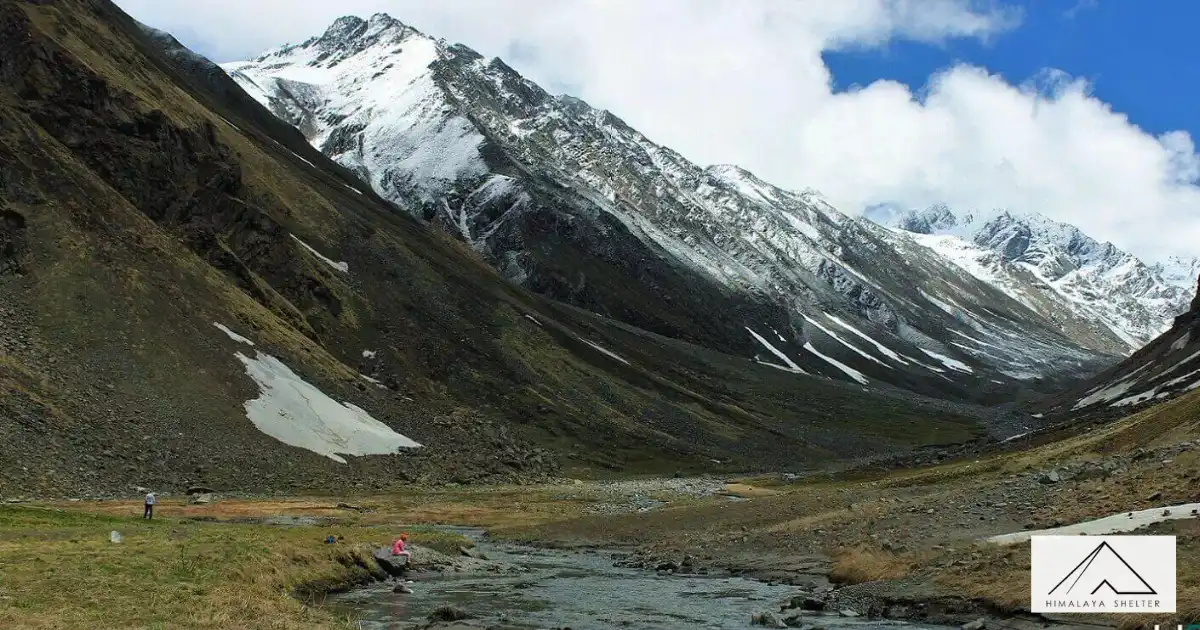
The day’s trek can be considered to be rather long as we today visit Har Ki Dun and Marinda Tal, a small lake formation due to the obstructing boulder across the river stream, which lies 2 KM further ahead of Har Ki Dun. As we start the trek, at a short distance a hidden and roaring waterfall is encountered with a small tea shop beside the waterfall.
The ascending path offers stunning views above the confluence of the Supin and Ruinsara rivers. From here, you can admire the snow-clad peaks of Ruinsara Valley, notably Black Peak, the highest in the area. To the north, the Har Ki Dun valley unfolds in the distance, with a clear view of the Forest hut. Continuing higher on the right of the river, you enter a final stretch through a beautiful forest. Emerging from the woods, you arrive at Har Ki Dun’s main camping area, nestled beside a babbling stream. This panoramic spot sits at the junction of two valleys, one originating from Jaundhar Glacier and the other beyond Hata Glacier, offering a breathtaking natural spectacle.
Higher up towards the North we can spot the Forest Rest House, while the wood-crafted GMVN guest house lies further up in the distance. The Har ki Dun peak stands tall right in front of us behind the Forest Rest House. Towards its left, Hata peak which is usually snow-covered can be seen. The minor ridge to our right, lined with a few scattered Himalayan birch trees Bhojpatra separates us from the massive Har Ki Dun valley that goes up all the way to the base of Swargarohini Peak. The paper-like bark of these trees was used in ancient times to write religious scriptures.
The vast open meadows following the course of the Supin River can be explored. Further ahead of the meadows one can walk among the forests of Bhojpatra trees (Himalayan birch) or get a closer glimpse of the Jaundhar glacier and Swargarohini peak, for which we will have to head upwards the Har Ki Dun valley, towards the Swargaroini peak in the eastern direction.
We can choose to relax and soak in the environment for some time or we can continue our trek to Marinda Tal, in the north, just 2-3 km away from Har ki Dun. The trail is gradually ascending here. It is a small lake formed by a huge boulder obstructing the river which flows down from the base of the Borasu Pass.
After our short visit to Marinda Tal we make our return journey back to Kalkatidhar. We take the same route and it becomes much easier as its all downhill from here. We reach back by early evening and rest at the campsite.
Day 5: Trek from Boslo to Devsu Thatch
Trek: 5.1 km, 4-5 hrs
Altitude Loss: 10,502 ft to 9,878 ft
Accommodation: Alpine Tents
Meals: Breakfast + Lunch + Evening Snacks + Dinner
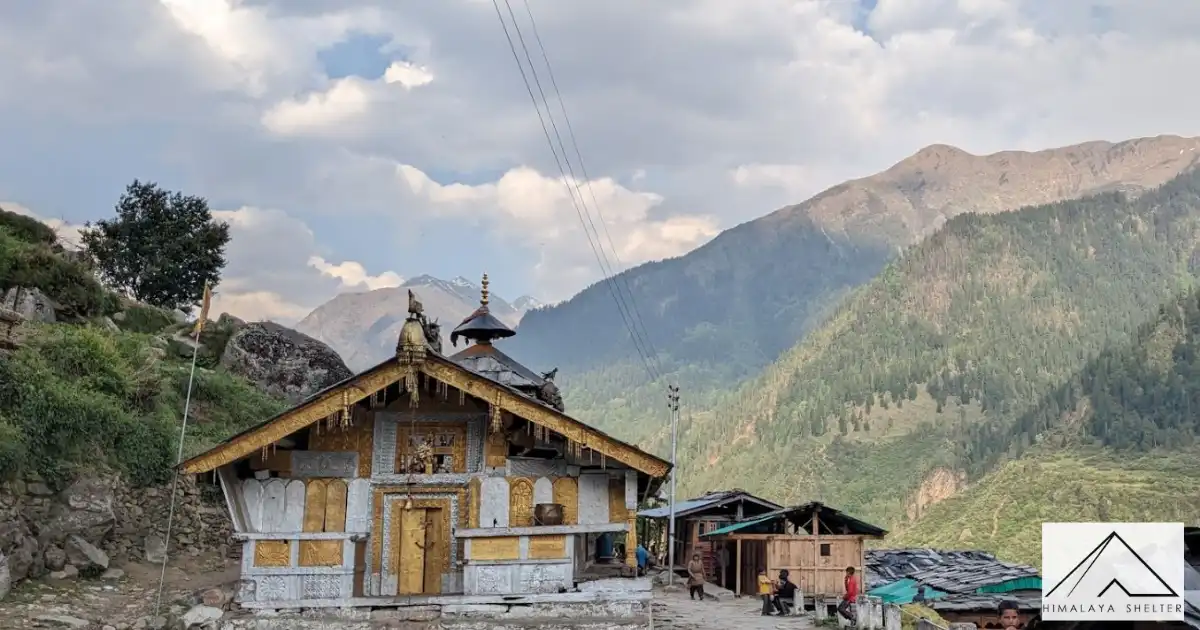
The journey back to Osla is an easy walk. On the route we come across a good view of the trail all the way to Osla and see the valley descend towards Taluka, around the curve of the ridge where the two streams comng from Har Ki Dun and Ruinsara respectively, converge. A little short of this intersection we can get a glimpse of a trail to our left marked by a sight of a bridge down over the stream.
This trail goes to join the trail to Ruinsara lake and is rarely taken. After reaching Osla, one can roam about in the village, talk to locals and soak in the Garhwali culture. We continue our journey from here to our earlier campsite of Puani Garat where we can spend time basking in the sun.
Day 6: Trek from Devsu Thatch to Gangad, Drive to Sankri
Trek: 7-8 km, 5-6 hrs
Altitude Loss: 9,878 ft to 7,709 ft to 8,265 ft
Accommodation: Cottages/Guest House
Meals: Breakfast + Lunch + Evening Snacks + Dinner

Early in the morning, post breakfast we set out from this beautiful abode as we start trekking through the same trail we trekked along on Day 1, towards Taluka. Although the views seem different as the perspective changes significantly trekking downhill. The walk takes lesser time than before and is enjoyable. We walk to the true left of the River Supin until we finally arrive at Taluka, from where a vehicle takes us back to Sankri. We retire for the day in camp alongside the river or in a guest house in Sankri.
Day 7: Drive from Sankri to Dehradun
Distance: 190 km, 8 hrs
Meals: Breakfast
Journey Ends: Arrive in Dehradun between 5 and 7 PM

The trek to Har ki Dun concludes today as we leave Sankri. The drive up to Mori through the unique lesser-touched regions is still amazing. The stretch right after crossing Mori town is still the prettiest along the entire journey, albeit the new hydel project has put the fragile environs at increased risk in this area. Rafting and Kayaking which was earlier prevalent here are no longer feasible. Regardless the beauty of the region remains to a significant degree. After crossing the towns and finally Kempty-Mussoorie, we reach Dehradun by late afternoon or early evening.
Trek Package Inclusions
Our treks are specially designed by the experienced team at Himalaya Shelter, taking you on an adventure of a lifetime all while making you connect not only with the bountiful nature but also with yourself and with others on the trek with you, creating wonderful memories which will last you a lifetime. All Himalaya Shelter treks are guided by experienced Trekkers having vast knowledge and experience of the region, providing with insightful information and stories pertaining to the region’s flora and fauna and the history of the region, whilst on the trek. It is safe to say that on successfully completing the trek, one will gain tremendous insight and experience along with lifetime memories.
- Transport - Pickup time: 7:30 am, Prince Chowk, Near Dehradun Railway Station
- Accommodation – At Base Camp, stay at a local homestay or guest house for one night each, which will give you an insight into the authentic lifestyle of the locals. (INR 5000 per person extra for single sharing throughout the trek)
On Trek stay in a 2-person Vango Halo Pro/A-Shape tent, which is to be shared by two trekkers, built to withstand extreme weather conditions and at the same time making you comfortable after a hard day’s trek. - Camping Equipment – specially designed sleeping bags that can withstand harsh weather conditions, foam mattresses. Other safety gear like microspikes, gaiters, an ice axe, and helmets will be provided.
- Medical Kit – our team will be equipped with an extensive medical kit, which our team is trained and experienced to use. Oxygen cylinders are used after they are thoroughly inspected throughout the Trek. Even campsites have large oxygen cylinders as backups.
- Permission - Forest entry charges for Indian nationals (Additional charges will be applicable for international tourists)
- Meals – Breakfast, packed lunch (on trek days), evening snacks, and dinner will be served. A hearty, delicious, and nutrition-filled Veg meals with egg preparation will be provided throughout the trek. (Jain and Vegan Food can also be arranged on prior notification.)There will be a dedicated Kitchen Tent along with a dining tent, which will have a dining table too.
- Our Team – A highly experienced and AMC-certified Trek Leader who will help ensure that the entire trek goes smoothly and safely while navigating the challenging conditions during the trek, and is skilled enough to navigate any medical emergency that can arise during the trek. Local and route Guides who are well-versed with the region and provide an in-depth insight into the local customs and knowledge of the flora and fauna endemic to the region. A dedicated Kitchen staff, which includes a Cook, a helper, and other support staff. There will also be porters and mules to carry common equipment.
- Cloakroom - We have a cloakroom facility available for extra luggage. Every trekker is permitted to leave their luggage behind at no charge.
Exclusions
- Personal expenses like tips, personal medicines, phone calls etc.
- Travel Expenses - Travel expenses from your hometown to the mentioned Pick-Up Point are not included in the trek fee.
From the scheduled pick-up spot to the base camp, we have our own fleet of vehicles like Bolero, Innova, Dezire, or Tempo Traveler (12-seater). This is be shared by trekkers for a pre-decided amount. All vehicles are non-AC. - Personal Equipment - Any personal gear like jackets, shoes, cutlery, or backpacks are not included in the trek fee. We recommend renting them from our Rental Store for an affordable fee. This can be pre-arranged to avoid last-minute hang-ups.
- Offloading - We encourage carrying your backpack to get into the true spirit of trekking. However, if needed, you can opt to offload your personal luggage of up to 12 kgs for an additional cost of INR 400 per bag per day.
- Trek Insurance - A mandatory trek insurance fee is charged in addition to your trek fee. Since most medical insurance doesn’t cover adventure activities, trek insurance offers essential coverage, enhancing your safety without a significant financial burden.
- Buffer day on the trek - We have kept a buffer day on the trek to account for any weather-related delay. If this is utilized, you will need to pay an extra amount to your trek leader.
- Anything apart from inclusions
- Please carry a lunch box for a packed lunch/breakfast to avoid using polythene and Aluminium foil.
Keeping the Himalayas clean is our own responsibility. Reduce the use of Plastic when you are in the abode of the Sacred Himalaya. 🌱
Har ki Dun distance from dehradun: The distance from Dehradun to Har Ki Dun is 222 kilometers (138 miles). This includes 200 kilometers by road to Taluka via Mussoorie & Sankri, and 22 kilometers by hiking from Taluka to the GMVN guest house in the Har Ki Dun Valley. The travel time can vary from 8 to 10 hours, and the hiking distance of 22 kilometers takes an average of 15 hours to cover.
Har Ki Dun is located in Garhwal Himalayas, Uttarkashi district in Uttarakhand.
No, but it's around 98.7 km away from Dehradun.
Yes, it's a beautiful place worth visiting and ideal for trekking.
Har Ki Dun trek is around 47 km long.
Har Ki Dun, Kuari Pass, Kedarkantha, Nag Tibba are few of most beginner-friendly treks in India.
Har Ki Dun is also known as Valley of Gods, located in Garhwal Himalayas, Uttarakhand.
Sankri Village in Uttarkashi District is the base camp or starting point for Har Ki Dun trek.
No, but it's a moderate level trek which usually takes 6 to 7 days to complete.
Har Ki Dun is an ancient, beautiful and famous trekking route in India. It offers a glimpse of the scenic beauty of the Himalayas.
Yes, but heavy snow can make it more challenging.
Yes, but it’s recommended to go with a guide for safety.
It's approx 489 km from Delhi.
Har Ki Dun Trek Videos
Har Ki Dun Trek - The Valley of God
Read More on Har Ki Dun Trek
Photo Gallery


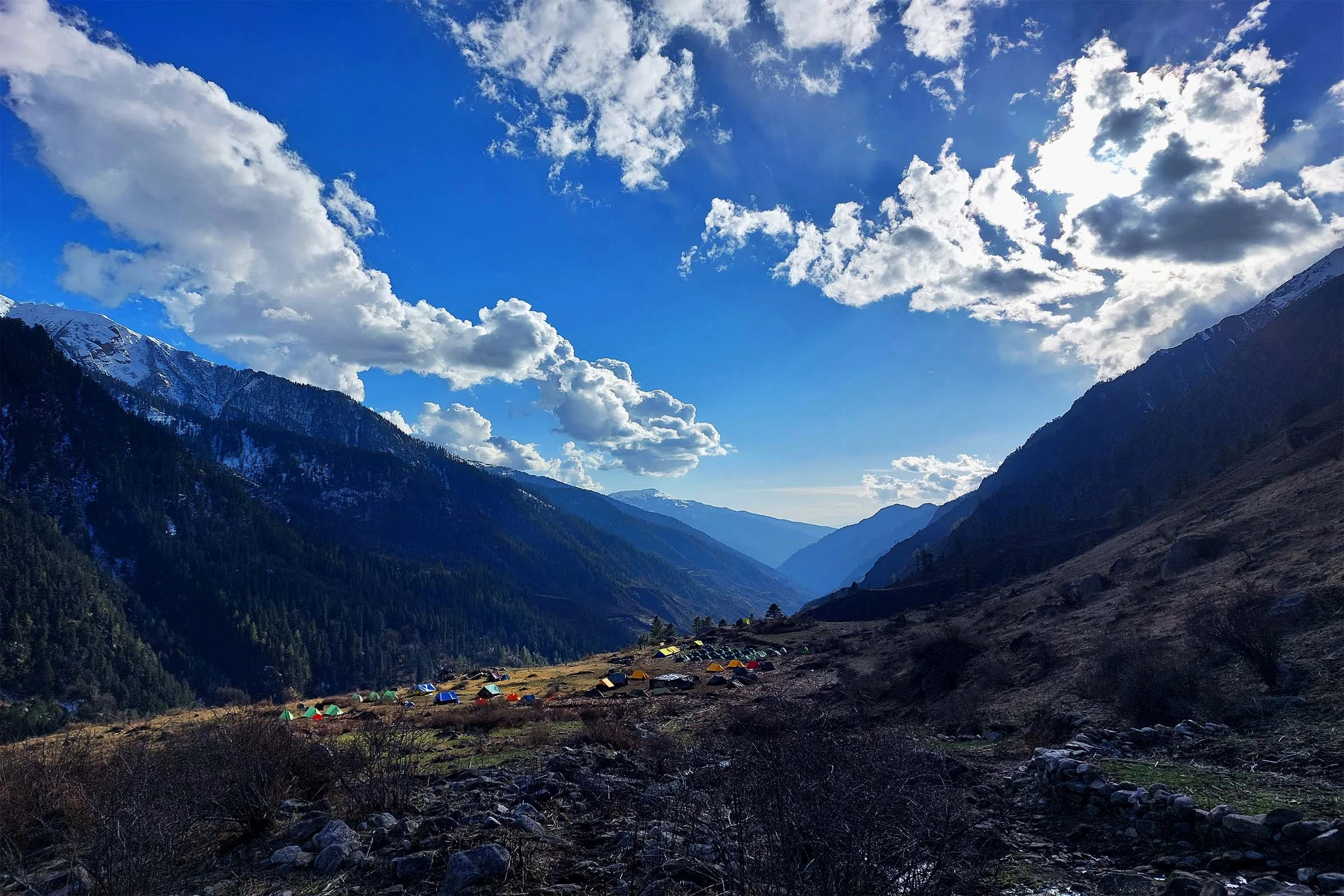
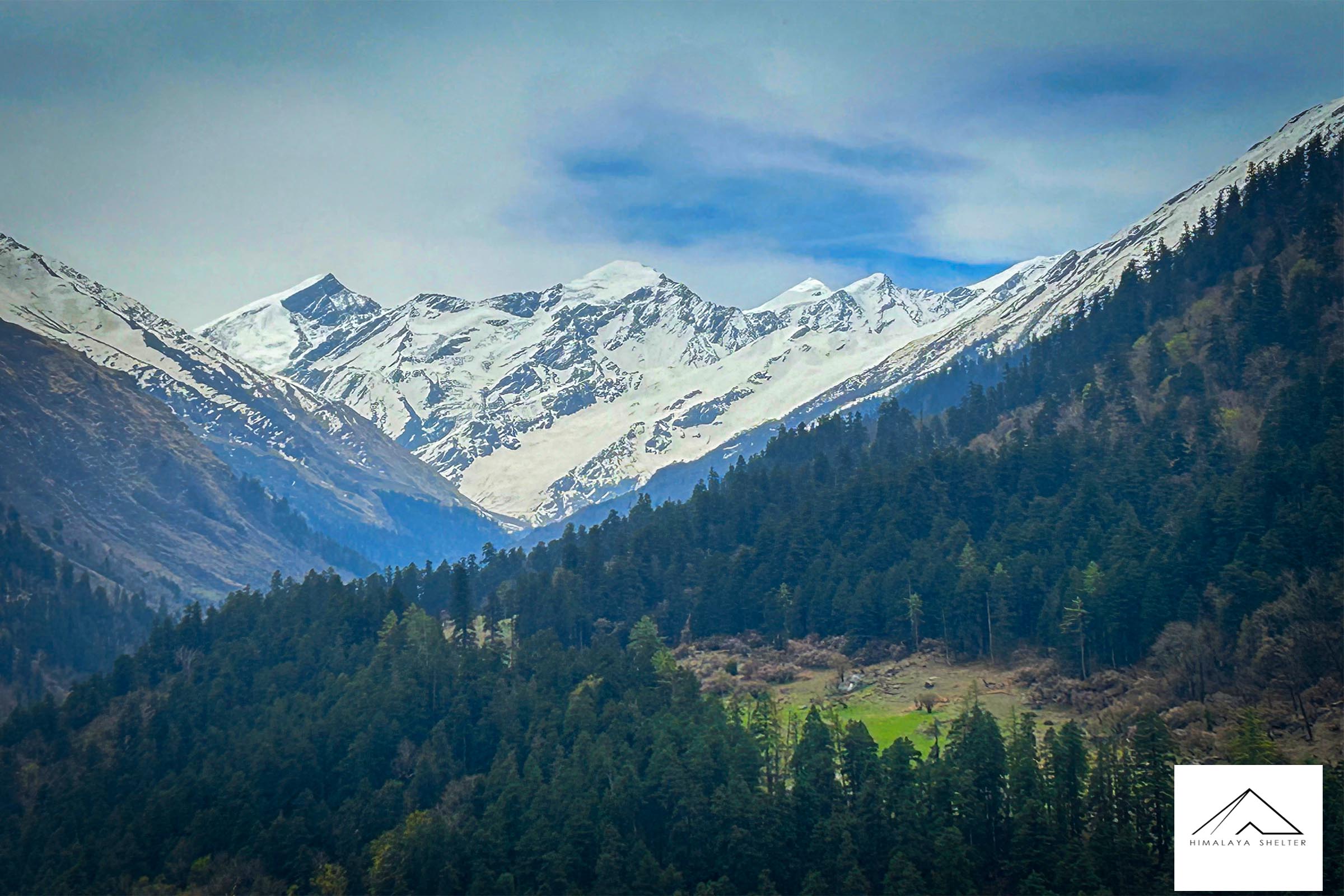

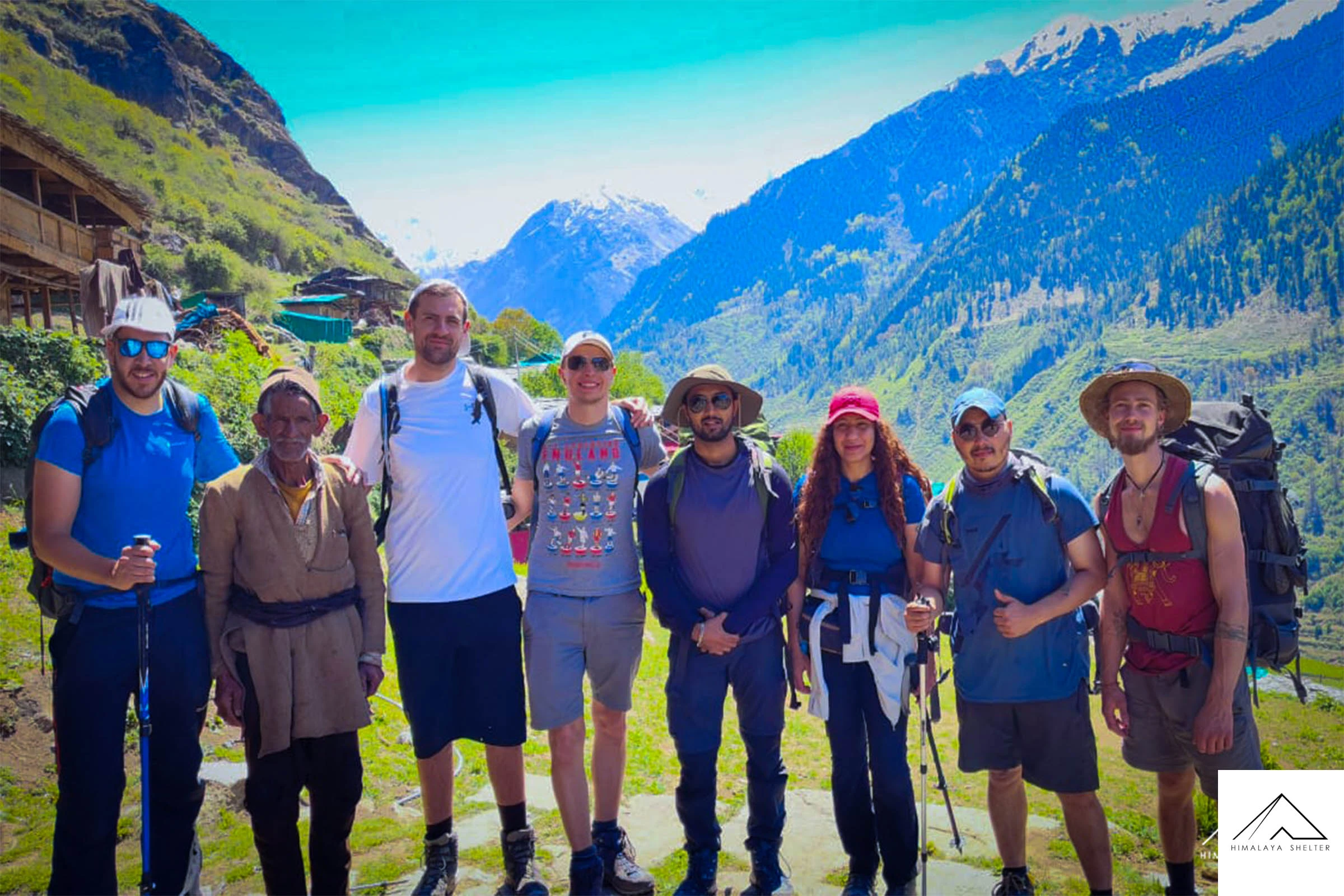
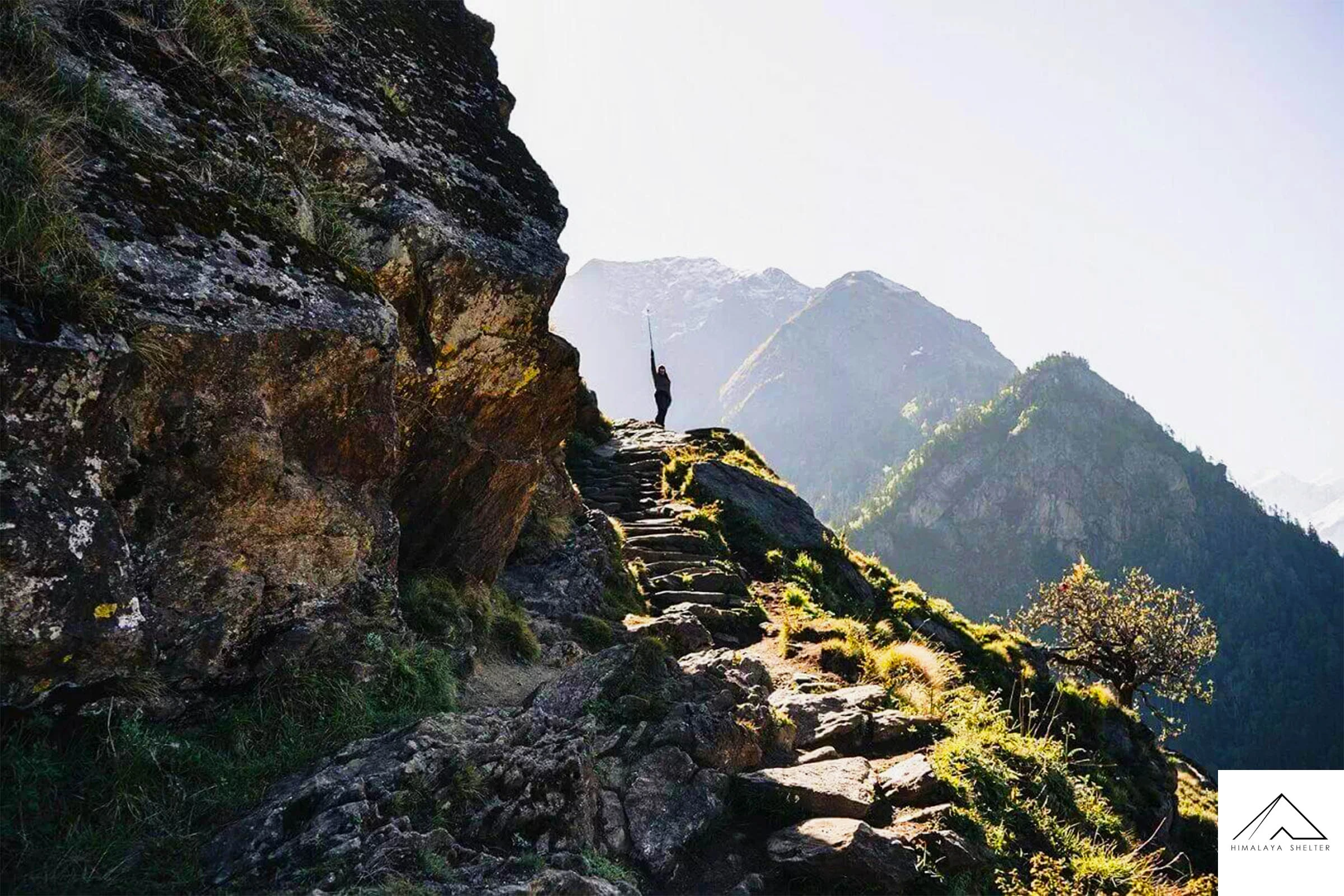
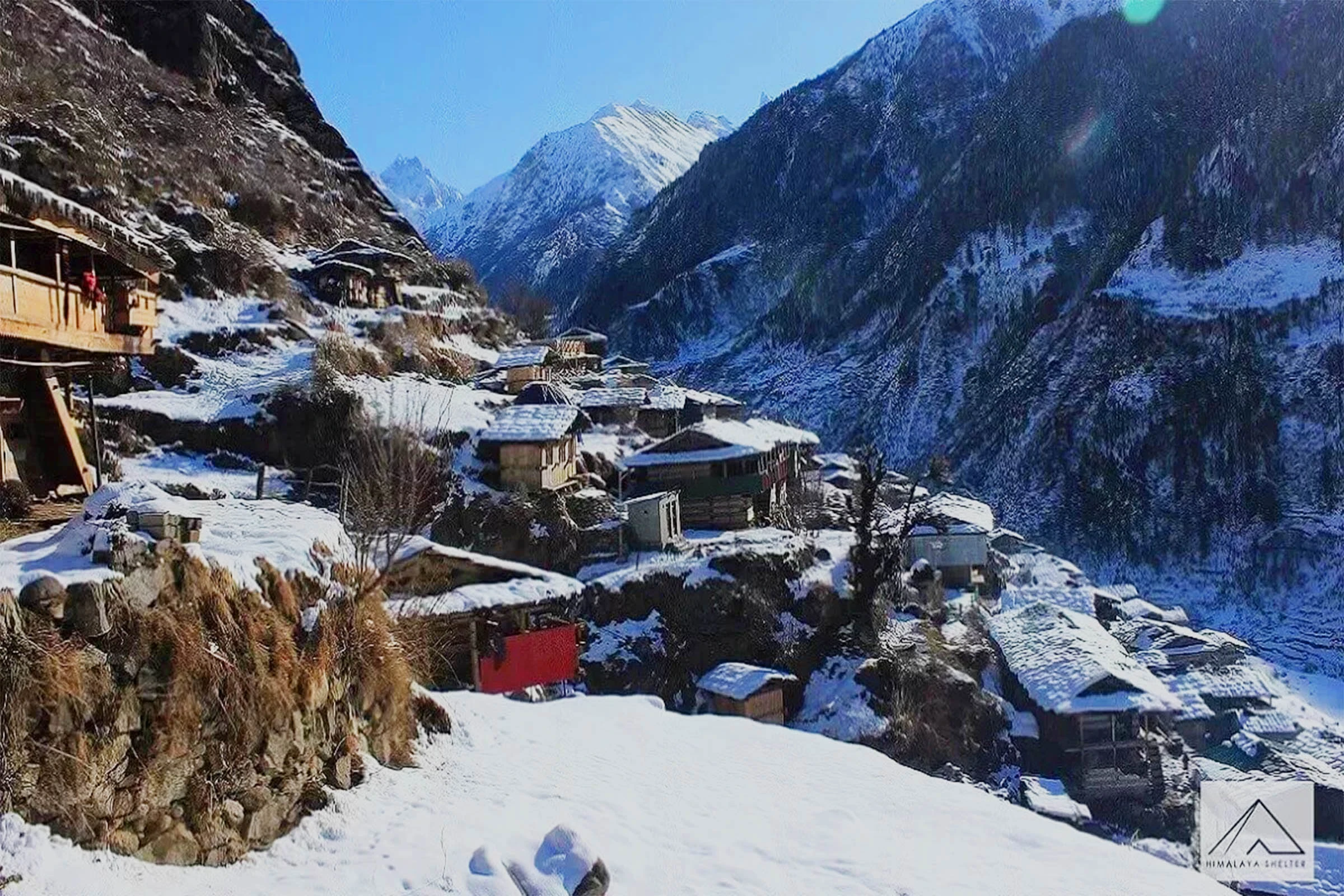
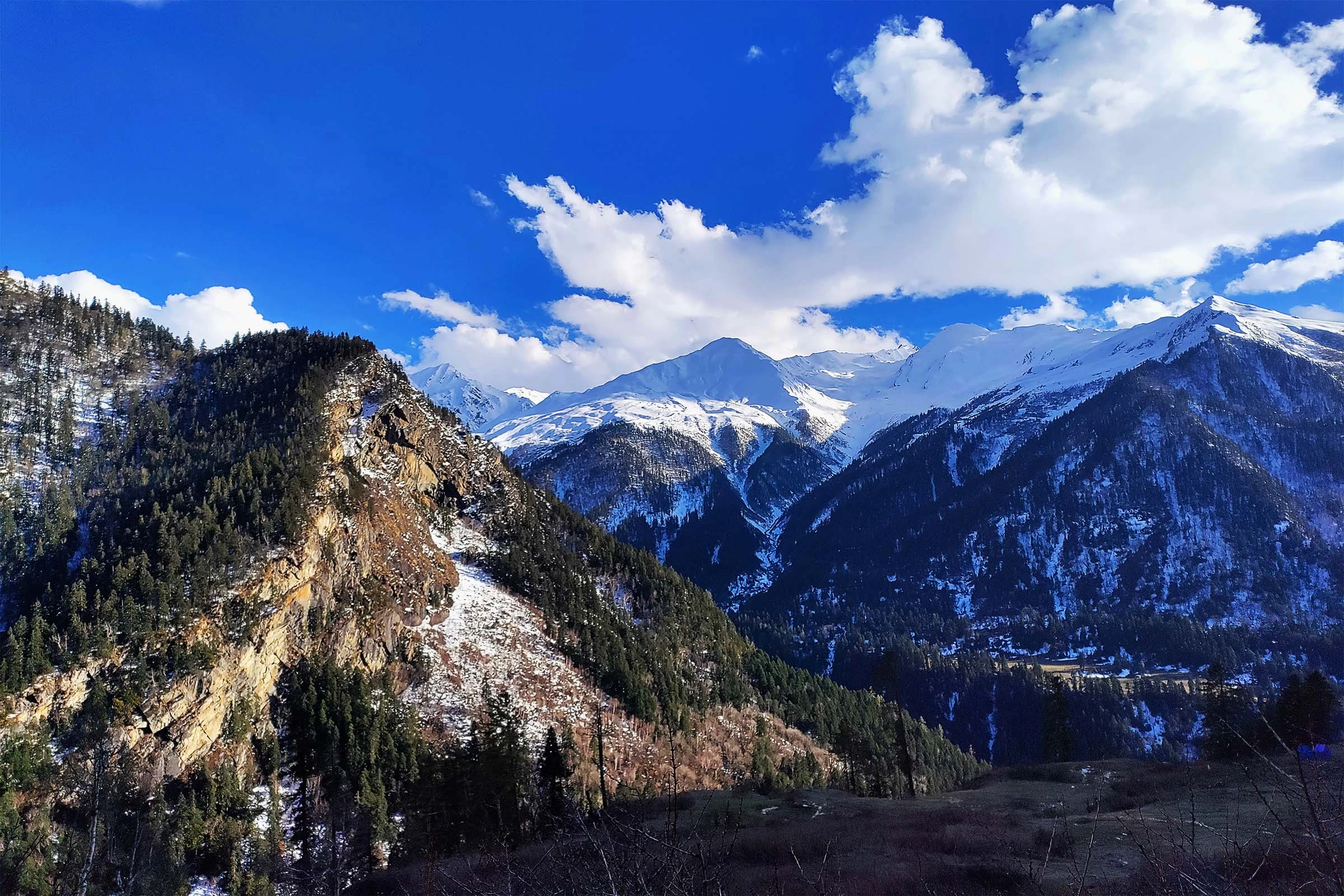
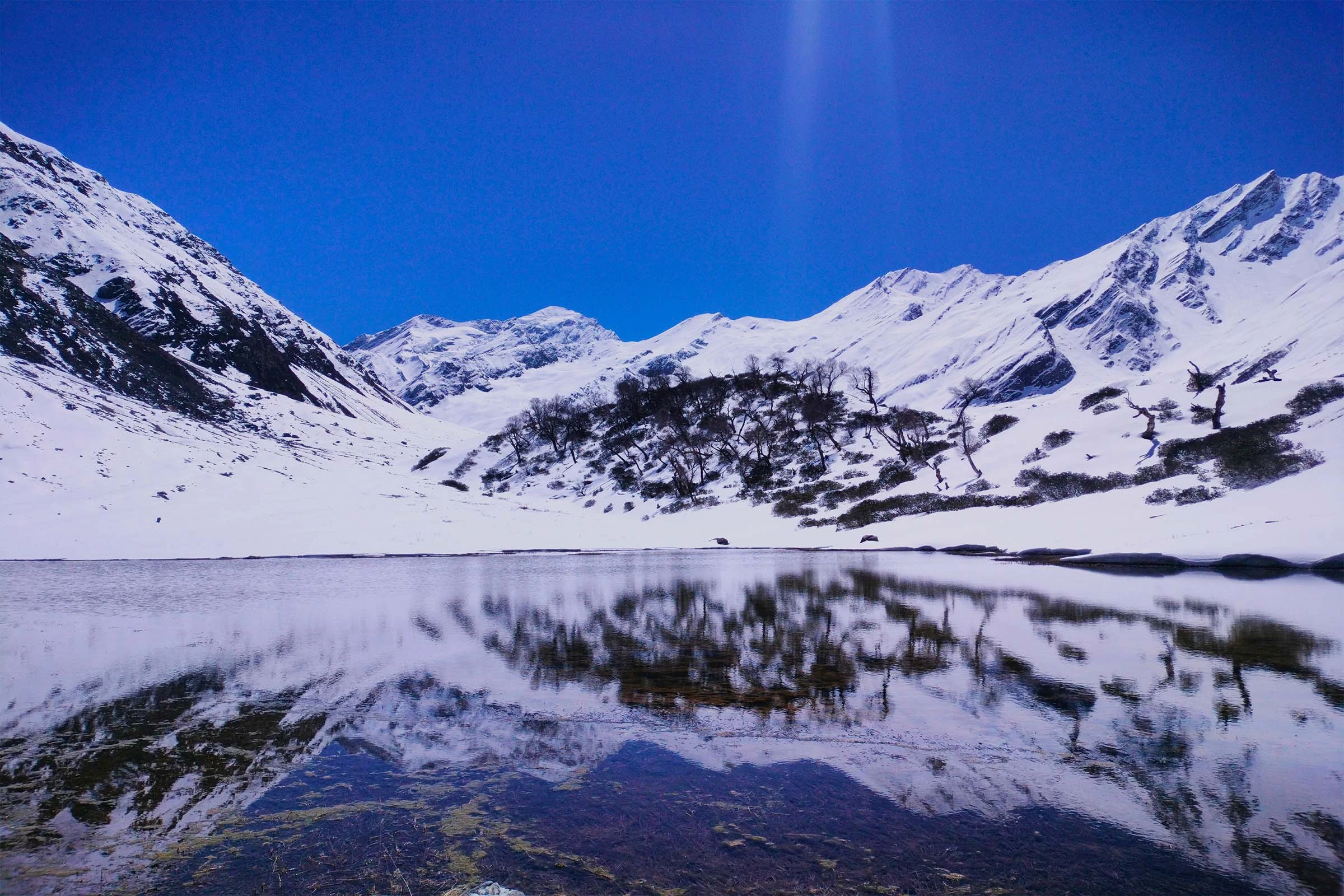

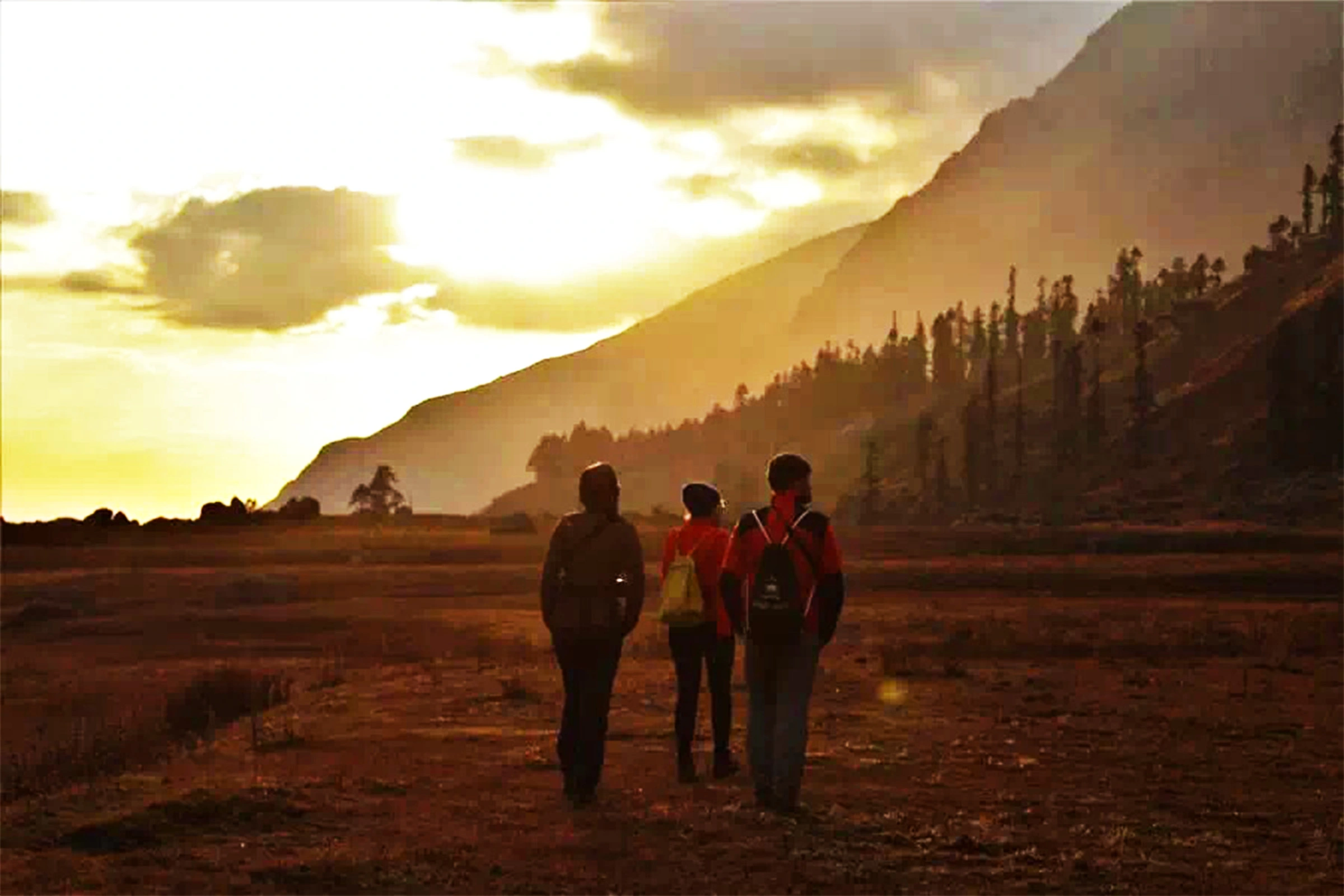
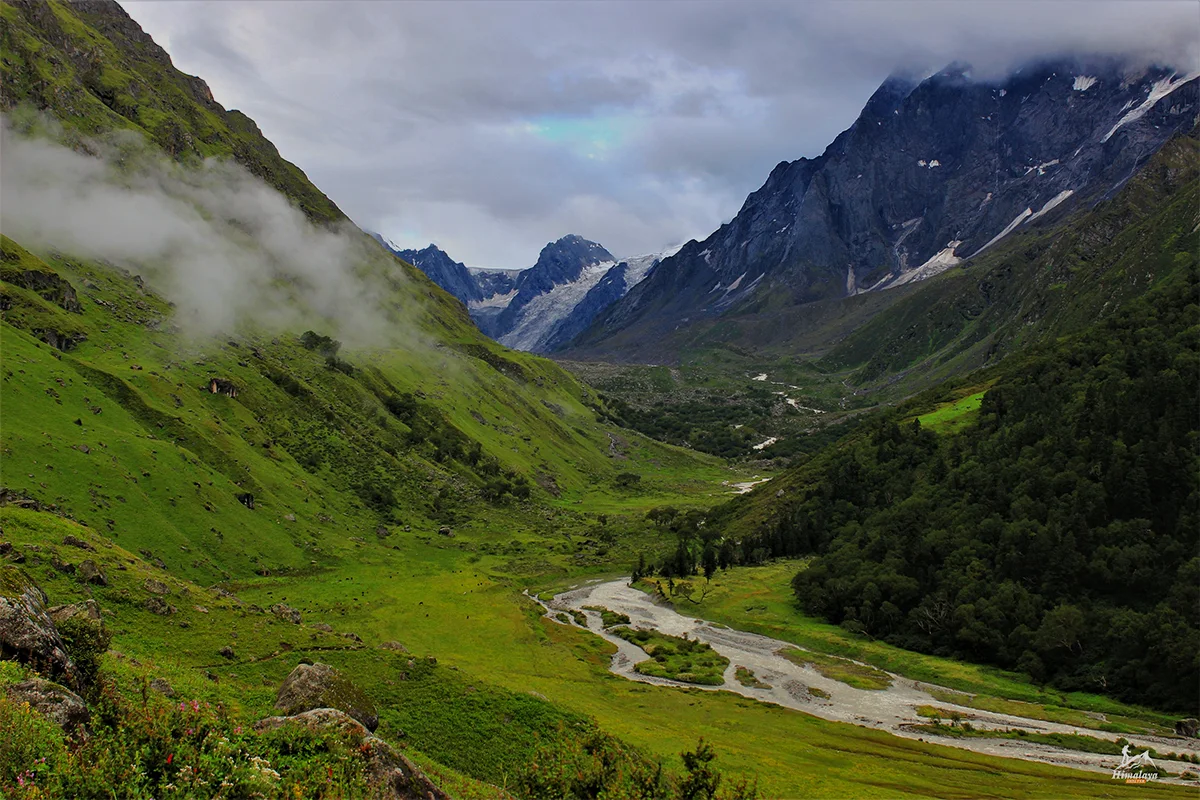
Treks by Categories
Treks By Month

Treks By Experience

